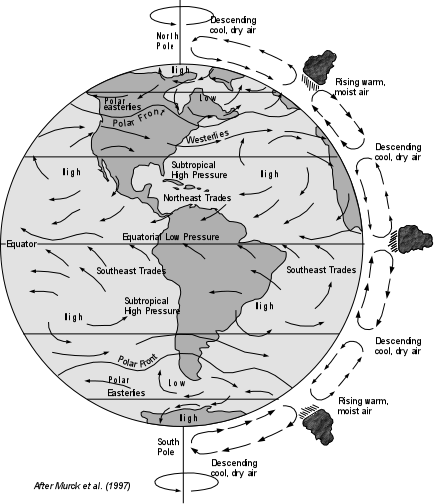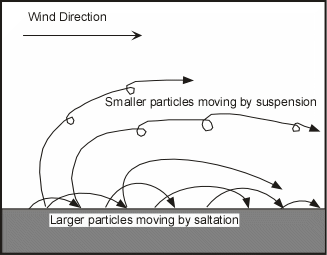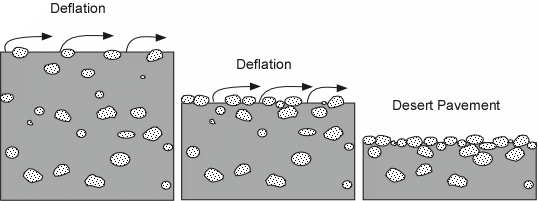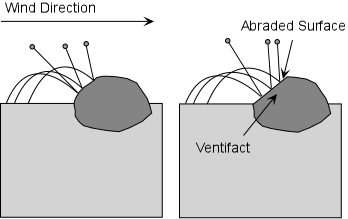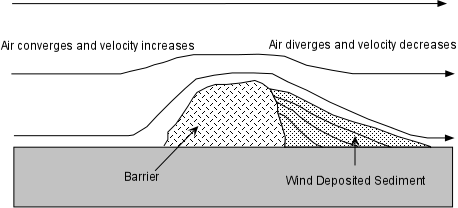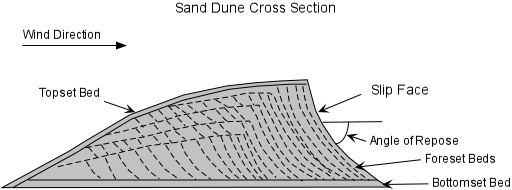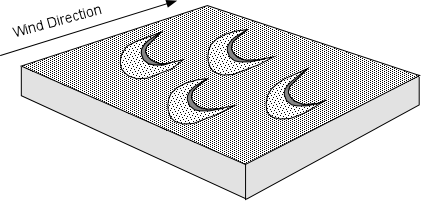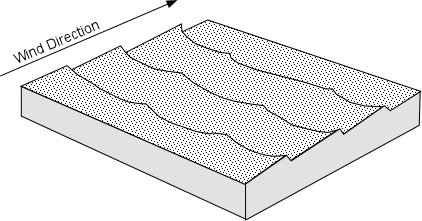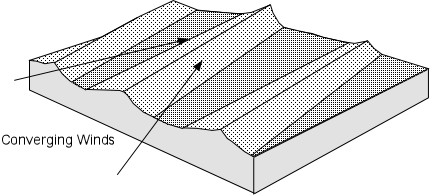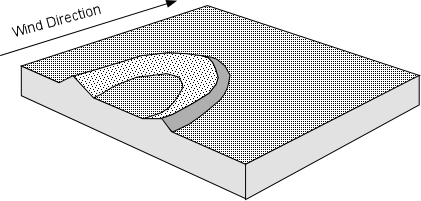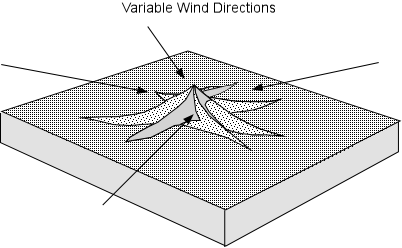Desertification
Desertification occurs as a result of climatic
changes, such as changing positions of the continents, changes in ocean and air
circulation patterns. The latter can be driven by changes in global temperature that occur naturally or as the result of human activities. Human impacts, such as overgrazing, overpopulation, draining of land, and lowering
of the groundwater table, can also contribute to desertification. As vegetation dies out,
the soil is more easily eroded and may be lost so that other vegetation becomes
destabilized. Since soil can hold moisture, if the soil erodes, the area may become arid,
and the desert expands.
Short term desertification took place on the great plains of the U.S. beginning in 1933 and lasting for several years. It was initiated by drought conditions that resulted from unusual weather patterns, but was exacerbated by overpopulation and plowing of the soil which removed grasses that would normally hold the soil in place. When the soil dried out, winds whipping across the area generated giant dust storms form which the period got its name - the Great Dust Bowl. It resulted in famine and economic hardship for residents of the area, most of whom migrated out of the area. Although the area has recovered, this episode of history shows how even short term changes in weather patterns and human interference with the land can lead to drastic consequences.
Long term desertification is also taking place in other parts of the world. In particular, south of the Sahara desert in Africa, the Sahel, is a semi-arid grass land that has been subject to overpopulation, overuse of water resources, extensive agriculture, and overgrazing during the past 60 years. The result has been desertification and resulting mass starvation of the human occupants of the land. |
